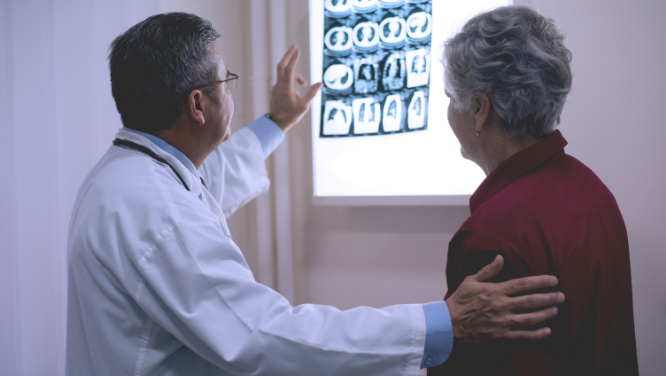
Operating Rooms
Operating Rooms
As Anadolu Medical Center, we provide services in 8 operating rooms with modern medical equipment in all branches, meeting patient and employee safety requirements.
The central sterilization system, ventilating system, and state-of-the-art devices in the operating rooms create ideal conditions for patient safety. All operations, including microscopic, endoscopic, arthroscopic, laparoscopic, and robotic surgeries, are performed successfully in our operating rooms.
Operating Room Staff
We prioritize performing surgeries under the best conditions and place great importance on teamwork. Our operating rooms operate 24/7 and consist of an experienced team including 7 anesthesiologists (2 of whom are on duty), 20 surgical nurses, 3 recovery room nurses, 12 anesthesia technicians, 2 perfusionists, 9 sterilization technicians, 11 operating room technicians, 1 depot and material management staff member, and 2 operating room patient clerks.
Technical Equipment in Our Operating Rooms
Two types of sterilization devices are used in our operating rooms based on the physical characteristics of surgical instruments: steam autoclaves and ethylene oxide sterilizers. After sterilization, quality controls are performed using physical, mechanical, chemical, and biological methods, and the results are recorded. There are elevators, including dirty and clean elevators, between the operating room and sterilization room. The operating rooms and associated areas are ventilated with a sterile ventilation system. Our fully-equipped operating rooms include central oxygen, nitrous oxide, vacuum, and air-conditioning installations, ensuring surgeries are performed under optimal conditions.
In our operating rooms, all systems, instruments, and devices are suspended from the ceiling (pendant) to prevent ambient pollution. Additionally, anesthesia procedures, which are crucial and vital parts of every operation, are performed with utmost care by a specialized team at our hospital. All vital signs and medications of our patients are digitally recorded from the time they arrive at the operating room until they leave. The presence of a Coronary/Cardiovascular Surgery Intensive Care Unit, General Intensive Care Unit, and Neonatal Intensive Care Unit provides vital assurance for all operations. All operating rooms are equipped with computers to view patients' test and imaging results.
With the ability to bring dental units and gastroenterologic instruments to the operating rooms, dental treatments, and interventions such as gastroscopy, colonoscopy, and ERCP can be performed under general anesthesia/sedoanalgesia.
Post-operation - Anesthesia Follow-up
After the operation, patients are awakened and transferred to the recovery unit. Here, we continuously monitor the vital functions of our patients and provide pain treatment. We closely observe our patients until they are transferred to their rooms on the ward.
Which Operations Do We Perform in Our Operating Rooms?
- General Surgery
- Ophthalmology
- ENT
- Urology
- Thoracic Surgery
- Cardiovascular Surgery
- Gynecology and Obstetrics
- Neonatal Surgery
- Pediatric Surgery
- Pediatric Cardiac Surgery
- Orthopedics and Traumatology
- Plastic and Reconstructive Surgery
- Brain Surgery
- Robotic Surgery
I Want to Learn More About the Operating Room!
Decision Stage
After deciding on surgery with our surgeon, our anesthesia team completes the necessary preparations, examinations, and tests, and then it's time for the surgery. After your admission procedure is completed, you are sedated with medication administered to you in your bed.
Transferring to the Operating Room
In the operating room, accompanied by your nurse, the anesthesia team uses a special form to verify details such as your identity, your operation, and the operation site, and takes you to your special operating room. In this room, the operating team (your surgeon, surgical nurse, operating room technician, anesthesiologist, and anesthesia technician) reviews important information such as identity details, surgery specifics, special conditions, and materials to be used.
You are transferred from your bed to the operating table with the help of a linen slide. A blanket connected to a warm air device is used to protect you from cold. Meanwhile, medications to be used in anesthesia and surgery are dispensed at a special station called pyxis.
Surgery Process
Surgical intervention begins after anesthesia. The anesthesia and surgery team are present throughout the surgical process. At the end of your surgical procedure, you are awakened and taken to the recovery room within the operating theater to recover under the observation of the anesthesia team. Here, your vital signs are monitored, and you are provided with pain therapy. When you meet the necessary safety conditions (vital signs, respiration, heart rate, blood pressure) required for discharge from the recovery room, you are guided to your nurse by the recovery room nurse.

We listen to your opinions and suggestions to further enhance our service quality.

You can fill out the form to get a second doctor's opinion on the results of your tests, the diagnosis of your illness, and the treatment options we offer you.

You can receive the healthcare services you need at your home. Please fill out the form for home healthcare services.
Featured Articles
- 6 Nutrition Tips for Those Who Fast
- What is Disease X (Virus X)?
- How Does Cancer Form?
- What is an Ovarian Cyst?
- What is Cervical Cancer?
- What Are the Symptoms and Treatment Methods of Testicular Cancer?
- Symptoms, Diagnosis, and Treatment Process of Bladder Cancer
- Liver Cancer
- What is Stomach Cancer? What are Its Symptoms and Treatment?
- Thyroid: What is it, Symptoms, Diagnosis, and Treatment


